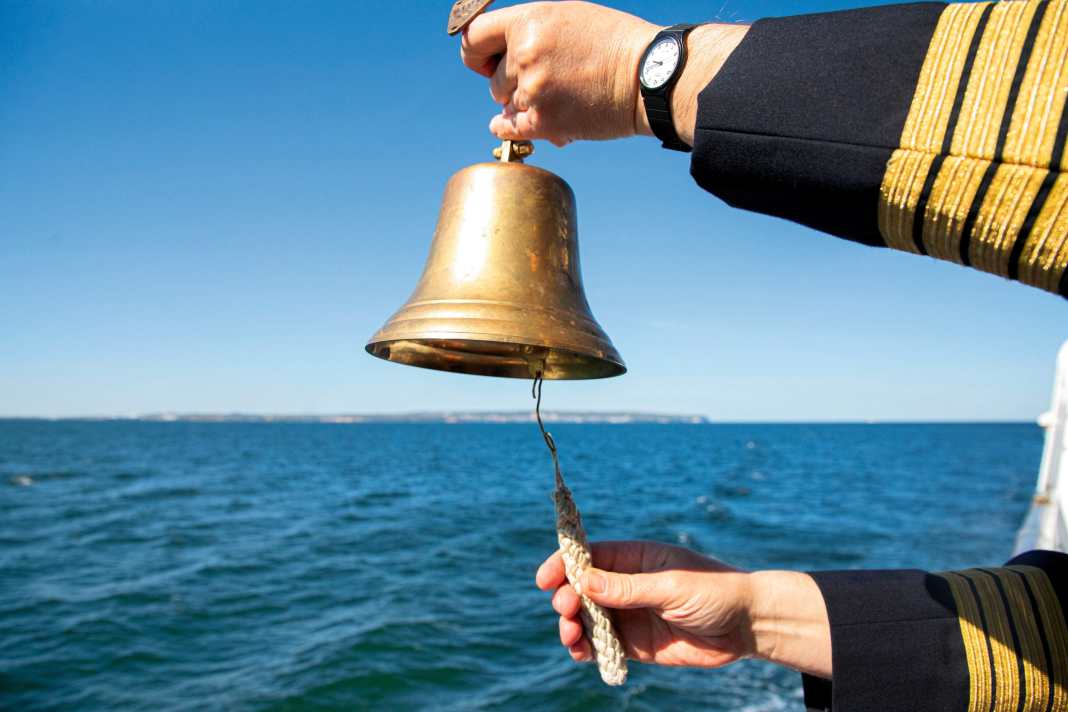





On this April day, the green-blue Baltic Sea off Binz on the island of Rügen forms the backdrop for a special ceremony. While holidaymakers enjoy the spring sunshine on the beach, someone is embarking on their last journey. The excursion boat "Binz" is waiting at the end of the pier with an urn on board. Around 15 mourners have gathered to bid farewell to Dirk from Berlin, who died four months earlier. Burial at sea, once the privilege of sailors, is now increasingly being chosen by people who have a connection to the sea.
Procedure for burial at sea
"We have cast off the lines today for Dirk's last voyage," the captain greets the mourners in the ship's saloon. The journey takes them about two and a half miles out into the Prorer Wiek. The atmosphere on board is one of mourning and remembrance. Some guests look out over the sea, others exchange anecdotes about the deceased. Once at the burial site, everyone gathers on deck. The captain carries the urn to the open ship's door, where it is slowly lowered into the sea via a grate. The ship's bell rings four times - the traditional sign for the end of a watch, here symbolising the transition from life to death.
Legal framework
Burial at sea is subject to clear legal requirements in Germany. In principle, the cemetery obligation applies, from which burial at sea is an exception. In most federal states, this exception is now permitted by default, explains the Federal Association of German Funeral Directors. However, some states such as Baden-Württemberg, Saxony, Saxony-Anhalt and Thuringia require an explicit exemption authorisation. The time limit for burial varies between one and six months, depending on the federal state. A written declaration of intent from the deceased regarding burial at sea makes the process considerably easier.
Rising demand and costs
The Federal Association of German Funeral Directors currently estimates the number of burials at sea in the North and Baltic Seas at up to 20,000 a year - and the trend is rising. Jule Harten from the Weiße Flotte in Stralsund confirms: "In the last four years, the number has almost tripled, so that we now organise one burial at sea every day on average." The costs for a burial at sea are considered comparatively favourable, as there is no need to purchase or maintain a burial plot.
Silent burials at sea, where the urn is buried without relatives, cost from around 1,600 euros, accompanied farewells with relatives on board from around 2,400 euros. Additional wishes such as a funeral orator, flowers or catering are charged separately.
Culture of remembrance after burial at sea
For many relatives, the question of a place to mourn arises. Many places now have memorials on land: benches with a view of the sea, name plaques or vases of flowers. Shipping companies also offer regular memorial cruises. "Depending on the ship, we can take 80 to 200 people with us. Relatives like to combine this with a family holiday here on the coast," reports Jule Harten. The burial sites are often located on ferry or excursion routes so that relatives can visit them on regular trips.
Facts about burial at sea:
Legal requirements:
- Special authorisation: Not necessary in most federal states, explicitly required in some
- Burial period: 1-6 months depending on the federal state
- Declaration of intent: Written declaration of the deceased recommended
Procedure:
- Cremation: must precede burial at sea
- Journey time: About 2-3 hours
- Ceremony: Speech by the captain, handing over of the urn, ringing of the bells
